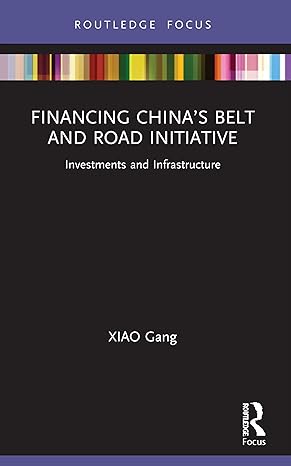Answered step by step
Verified Expert Solution
Question
1 Approved Answer
2 Intertemporal budget constraint of the government In this problem, we set up the intertemporal budget constraint of the government, and link it to the
2 Intertemporal budget constraint of the government In this problem, we set up the intertemporal budget constraint of the government, and link it to the Fisher equation and ability to inflate away part of existing debt through a surprise issuance of new money. Because we will explicitly differentiate between nominal and real variables, we will denote nominal variables with superscript N. Consider a government in periods t = 1,2. The government starts period 1 with existing stock of money M (that has already been issued previously). In period 1, the government must pay for government expenditures GN (in nominal dollars). These expenditures are financed through taxes T and borrowing (new government debt) B. N. The government promises to pay a nominal interest rate i2 on this debt (i2 denotes the interest rate on debt issues in period 1 that must be repayed in period 2). In period 2, the government must finance government expenditures GN and repay the debt plus interest. It does so by collecting taxes TN and an increase in the money supply from M to M2. Question 2.1 Set up the government budget constraints (in nominal terms) for periods 1 and 2. Question 2.2 Denote P the aggregate price level in period 1, and P2 the aggregate price level in period 2. Divide the government budget constraints in period 1 and 2 by P and 2 P2, respectively, to express the equations in real terms. Denote the quantities in real terms without the N subscript for instance, G = GN/P real government expenditures in period 1. Substitute out B to derive the intertemporal budget constraint for the government. Interpret the equation from the perspective of how different sources of revenue pay for different expenditure 2.1 Inflating away existing debt We now show how the government can 'cheat' lenders and inflate away existing debt by issuing new money (increasing money supply) and thus reducing the real value of existing nominal debt. We start with the government budget constraint for period 2, express in real terms. In the previous section, you were asked to derive this constraint in the form G2+ 1+12 1+2 B = T+ 9M M 1+2 P1 (2) The left-hand side are the real expenditures of the government in period 2 - it must pay for expenditures G2 and the real value of the debt plus interest. The right-hand side is the tax revenue and real value of newly issued money (see previous derivations). Question 2.3 Consider the quantity theory of money under classical dichotomy. Imagine that the velocity and output are constant. What is the relationship between the the inflation rate 2 and the growth rate of the money supply, g? Question 2.4 Recall the Fisher equation in expectational form 1+2 = (1+2) (1+ R) or, after a logarithmic approximation i2 = + R2. Here, R2 is the real interest rate that investors (who lend to the government) require for their lending, and 2 is the rate of inflation that the investors expect in period 1 to occur between period 1 and period 2. Assume that the government promises the investors to keep the money supply constant, and investors trust this promise. What is the nominal interest rate investors require on their lending? Question 2.5 Assume that investors in period 1 lend to the government at the interest rate i2 that you determined in the previous question. At the beginning of period 2, the government can choose a different growth rate of money supply g' than 9M = 0 it promised. How can the government reduce the real value of the outstanding debt? Question 2.6 Now think about what happens in the following period. After the govern- ment inflated away part of the debt by using money growth rate 9'M > 0 instead of the promised g = 0, investors will now believe that in the following period, the money growth rate will continue to be g = 0. How can the government fool investors again? How can this lead to a hyperinflation, and what can the government do to avoid such hyperinflationary periods
Step by Step Solution
There are 3 Steps involved in it
Step: 1

Get Instant Access to Expert-Tailored Solutions
See step-by-step solutions with expert insights and AI powered tools for academic success
Step: 2

Step: 3

Ace Your Homework with AI
Get the answers you need in no time with our AI-driven, step-by-step assistance
Get Started


